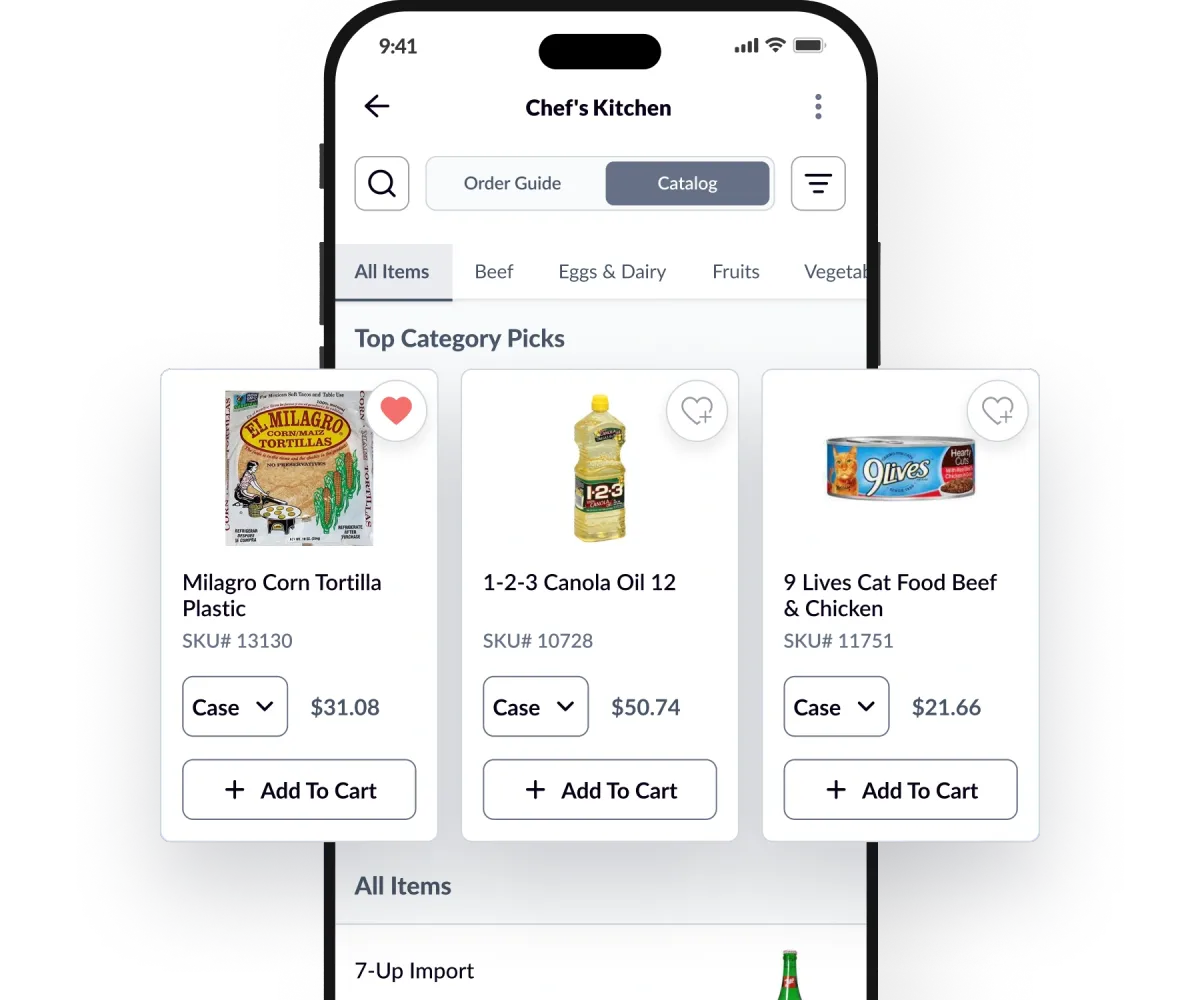Chicago’s Premier Wholesale Food & Restaurant Supply – Over 10,000 Products for Every Kitchen!
Discover the Essence of Culinary Excellence with Chef's Kitchen – Your One-Stop Source for Bulk Grocery, Bakery, and Restaurant Supplies at Unbeatable Prices.
Your One-Stop Wholesale Grocery & Restaurant Supply Store
Located just minutes from downtown Chicago, Chef’s Kitchen is the Midwest’s premier source for bulk food, grocery, and restaurant supplies. Whether you need fresh produce, dry goods, frozen foods, or kitchen essentials, we make it easy to stock up and save. Sign up today for a FREE cash and carry membership, or view other membership options below.
Chicago’s Wholesale Food & Restaurant Supply – Quality & Convenience
What We Offer:
✅ Over 10,000 products across grocery, bakery, and restaurant supply categories
✅ Cash & carry shopping – Walk in and buy instantly!
✅ Delivery & pickup options throughout Chicago and the Midwest
✅ Exclusive wholesale pricing – No membership fees!

Bulk Grocery & Foodservice Ingredients
We carry fresh produce, grocery, dairy, dry goods, and frozen foods in bulk quantities for restaurants, grocery stores, and bakeries. Trusted by 1,000's of businesses across the Midwest and Canada.

Restaurant & Commercial Kitchen Supplies
From kitchen essentials to disposable packaging, we provide the tools and equipment you need to keep your business running smoothly.

Bakery & Specialty Food Supplies
Baking in bulk? We’ve got flours, sugars, fillings, and supplies at wholesale prices to support bakeries and dessert businesses.

Reduce your weekly order time by 50%
Save time and reduce order errors with online ordering. Plus, see order history, select substitutions, and more.


Custom Order & Delivery Services
Need a large order or specific items? Contact our team to set up custom orders and delivery for your business.
Testimonials


Great place, reasonable price and polite staff 👌🏻


Extremely clean and the staff is so helpful as well as welcoming!!! 100% recommended for bakers looking for baking supplies!


Chefs Kitchen is UNBELIEVABLE! First off, the place is spotless. Parking lot is gigantic. Huge selection of products, and to top it off the staff super friendly. A great find. Easy In/Easy Out.
Chefs Kitchen is UNBELIEVABLE! First off, the place is spotless. Parking lot is gigantic. Huge selection of products, and to top it off the staff super friendly. A great find. Easy In/Easy Out.
Never miss an update from Chef's Kitchen!
Be the first to know about exclusive deals, fresh product arrivals, and insider tips for chefs, bakers, and food enthusiasts. Sign up for our newsletter and stay ahead of the latest trends in wholesale grocery and restaurant supply!


FAQs
Got Questions? Find Your Answers About Our Products and Services Here!
What types of products does Chef's Kitchen supply?
Chef's Kitchen has over 10,000 products to support grocery, bakery and restaurant businesses. We carry a wide selection of fresh, frozen and dry goods in addition to kitchen, bakery and restaurant supplies. Review our catalog to see everything we carry in our warehouse.
Do you display pricing online?
Pricing is available only for members. Sign up for free to access exclusive wholesale pricing!
How can I place an order with Chef's Kitchen
After your membership application is approved, you can can order via our website, phone, or email. Our team is ready to assist you.
Who can shop at Chef’s Kitchen?
We serve both businesses and individual customers. Whether you own a restaurant, bakery, or just want bulk groceries at unbeatable prices, you're welcome!
Can Chef’s Kitchen assist with urgent supply needs?
Yes, we have systems in place to accommodate urgent and last-minute supply needs.
Does Chef's Kitchen offer delivery services?
Yes, we offer reliable and timely delivery services. Contact a sales rep to coordinate your delivery today!






























